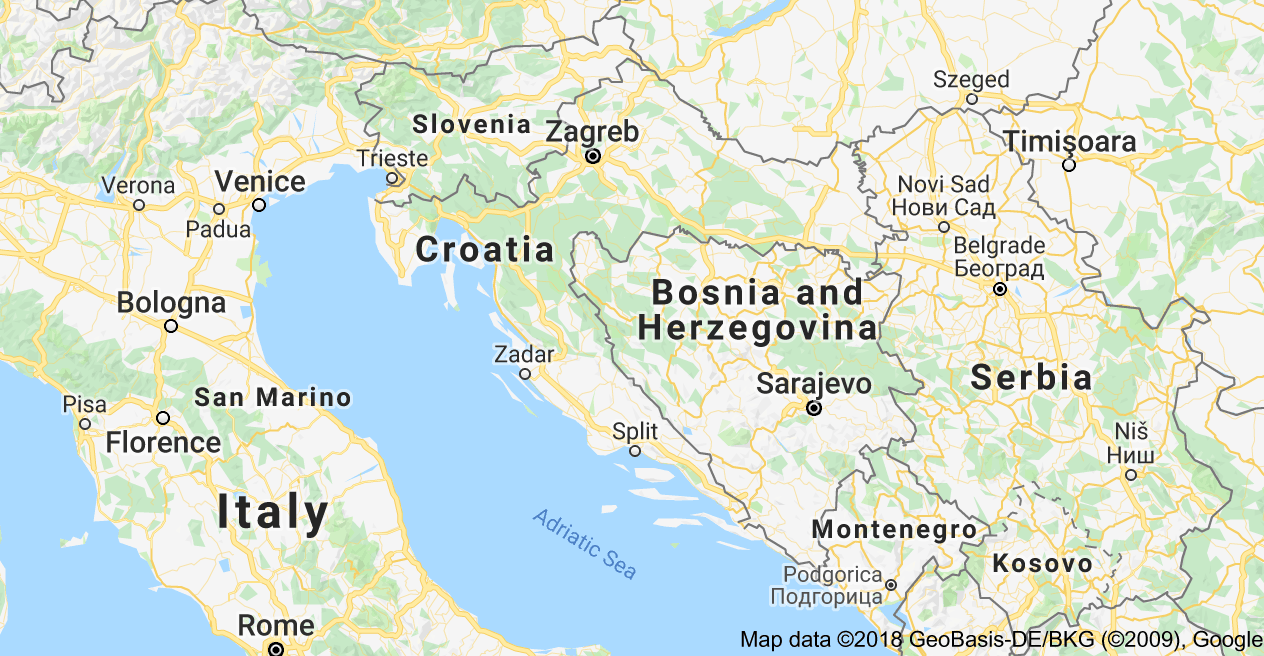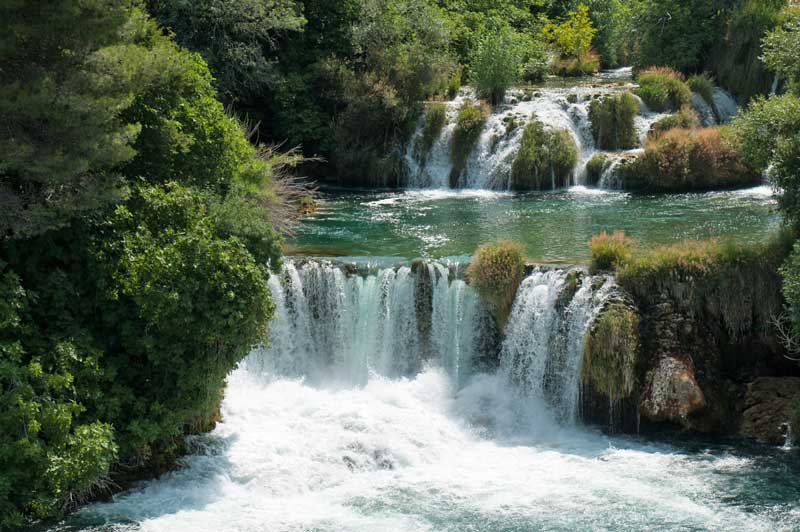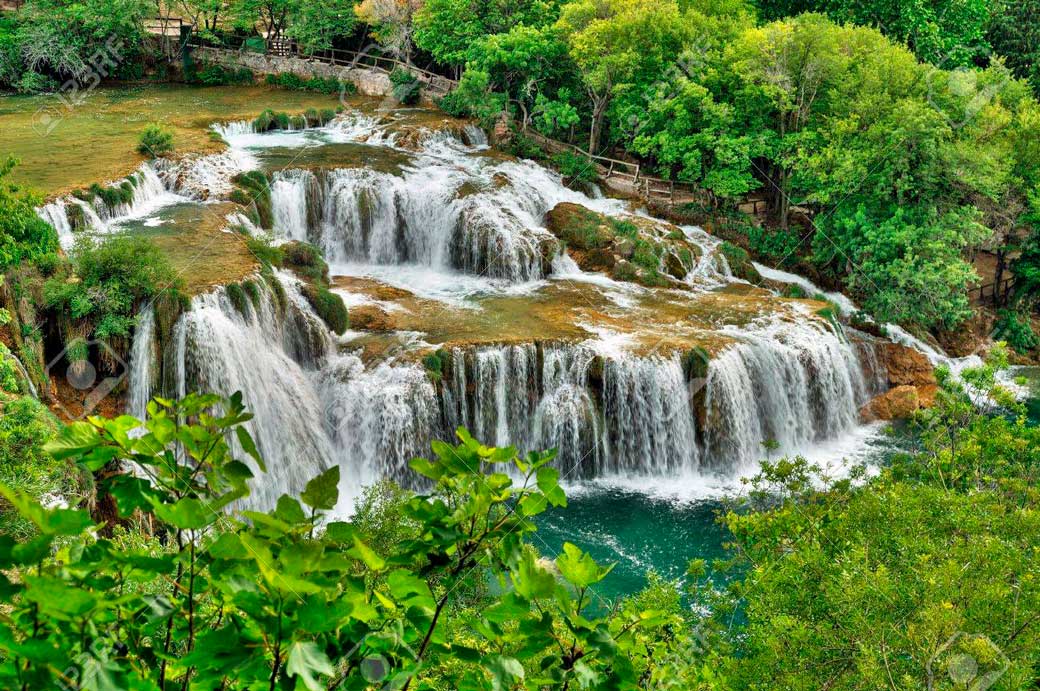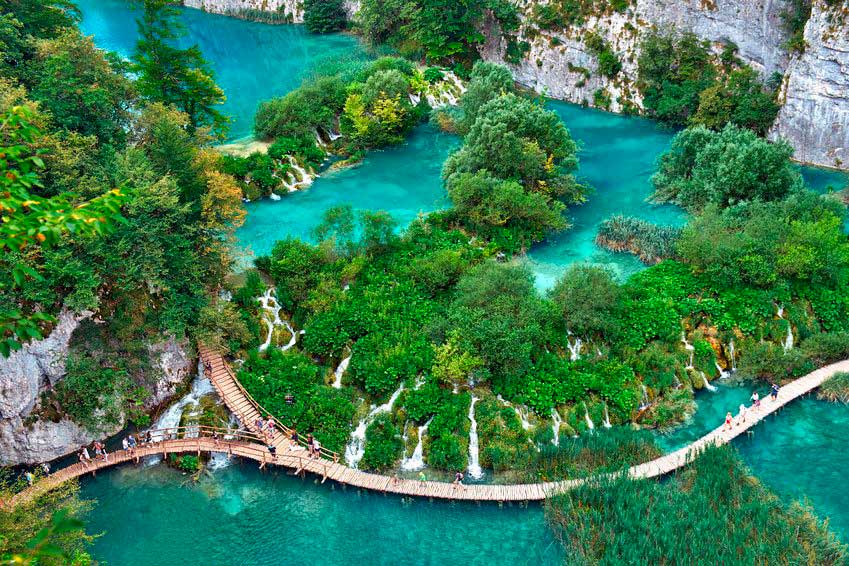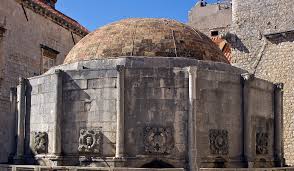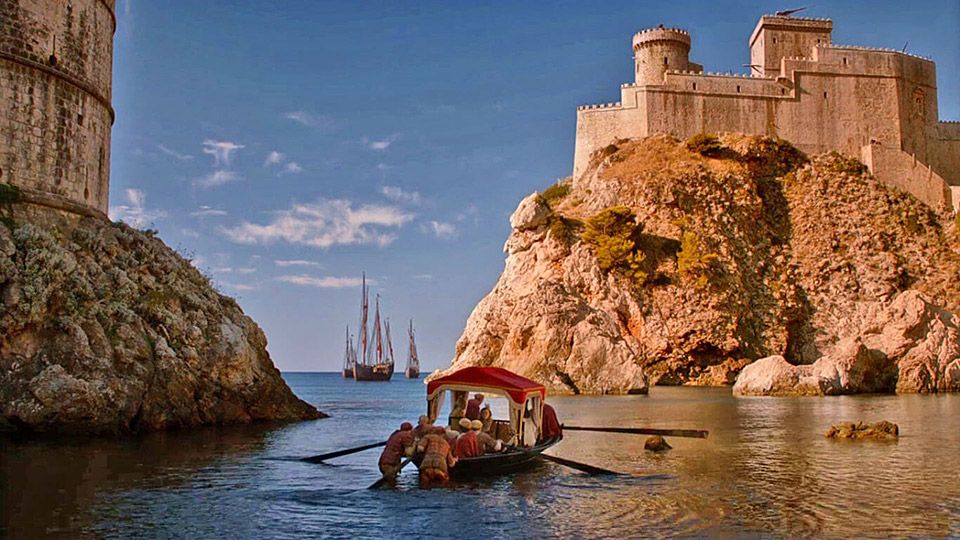|
VANAMALI IN CHINA
I’m not very sure why Vanamali decided to take me to China. It was
certainly was not a high priority for me. But He has his reasons for
everything and I’m only a humble instrument so I simply followed
instructions. Of course if He decides something, everything goes without
a hitch. We got all our bookings at the lowest possible price and
without any hassle. We set off from Delhi and landed in Shanghai where
our Chinese friends from Singapore were awaiting us. I must admit that
we were indeed grateful to have them with us for the first week of our
stay in China since almost nobody knew any English. We would have been
like lost children in the concrete jungle without them. The taxi whizzed
us through the beautiful streets flooded with flowers since we had
landed at the tail end of the week known as the Golden Week when the
whole of China was on the move to visit various parts of their own
country so every place we visited was beautifully adorned with flowers.
Of course this meant that I had no dearth of flowers for my daily puja. 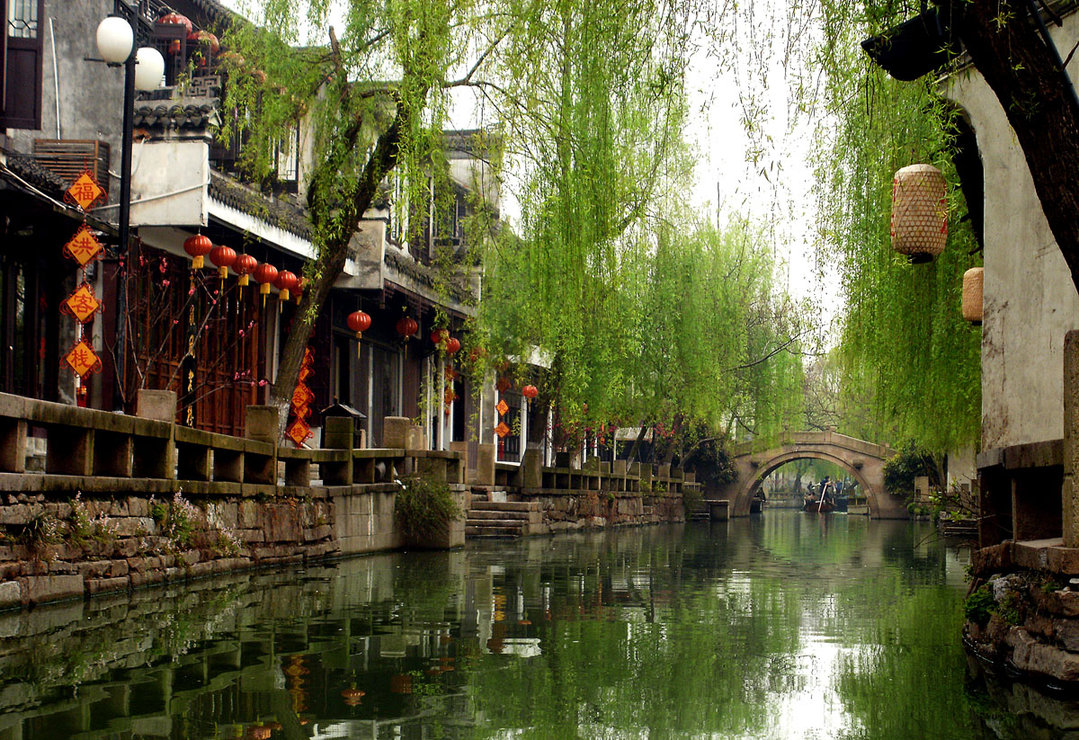 Zhouzhuang Water Village Our hotel in Shanghai had been booked by my son so it was an old colonial building reminiscent of the British Raj except that only one person spoke English in the reception. It was right in the middle of the busiest street. The next thing was to find some lunch. Let me say at the outset that this is a constant problem which will face every vegetarian since the Chinese do not know the meaning of vegetarianism. Even if you can manage to convince them that all you want is some boiled or fried or stewed vegetables, they will still make it in lard which is the only shortening they use. It is difficult to make them understand that they should use some vegetable oil since lard is pig fat and we don’t eat pig!! Shanghai was another huge metropolis like Hong Kong or Tokyo. Of course at night when it was lit up it looked very magical but since I’m not a city lover my stay there was made bearable only due to our visit to one of the best water villages of China, called Zhouzhuang. We were transported there in a huge steam barge made in traditional Chinese style. The village is known as the Venice of China since the houses are connected by rivers on which boats are constantly plying. The boatmen are normally “women” dressed in traditional clothes and wearing huge bamboo hats. The oars are also huge and of a particular type. They sang little ditties as they rowed their boats, all of which I found fascinating. The rivers have lovely bridges at various places. Like Venice it’s a village of bridges. Many artists have painted these bridges especially the one known as the double bridge. Apparently there was a very rich man called Shen Benren in this village who was far richer than the king at that time. His house is very well preserved and has seven courtyards and five archways. There are hundred different sized rooms. The first part of the house is the water gate and quay from which you could catch a boat to take you to other places. The middle portion is the entrance hall, tea hall and main hall and at the rear are the living rooms. Narrow corridors run all round the rooms through which servants could go in and out. Many of his heirlooms are still to be seen though most of them were taken off by the king who he helped but like all kings he was not to be trusted and at the earliest opportunity he had him banished to one of his poorest provinces where he lived and died in an impoverished condition. Apparently his great grandsons returned and took back the ancestral property and thus we can still enjoy their beauty. The only problem with this place is that the rich man got rich mainly due to the fact that he had a secret recipe for making a fancy dish with pig trotters. This recipe is still going strong in the family and they have a monopoly of it. They make only 800 trotters daily and there is a huge queue in front of the shop which sells this delicacy since people come all the way from Shanghai and even Singapore in order to buy it. From Shanghai we went to Beijing. A pall of fog and cigarette smoke enfolded the city. We had to get masks as soon as we landed. There was something negative and chilly about the whole atmosphere. I would have been happy to have left the very next day but of course it was inconceivable to leave without seeing The Great Wall and the Forbidden City. So the next morning we joined a tour with a Chinese guide to go to the Great Wall. The Chinese guide was no doubt very good but since we couldn’t understand a word of what she said it was not of much use to us. She talked incessantly from the time we boarded the bus till the time we got off and still kept talking but then I was able to sneak off somewhere and look at the flowers or some such thing.  Forbidden City The way to the tombs was lined with many trees and statues of animals both mythical and natural. There were many superstitions attached to this. We were supposed to walk down this path without looking back. This appeared to be one of the places that had not been destroyed by Mao since it had been done with great attention to Feng Shui and it was said that the positioning of this place was of great importance to the country. If it was altered in any way calamities would surely occur. Despite his practical nature obviously Mao had a few superstitious traits since he took care to preserve this place. We could go right down to the bowels of the earth where we saw the tomb of the last emperor and his wife and his one hundred concubines. The huge coffins had been covered with gold at one time but now there were just wooden boxes painted red. We came out by a different way after climbing many steps all reeking with the rancid stench of years of rot and mildew. On the way back along the road leading away from the tombs we were not allowed to look back or take photos and we had to repeat the words, “We are now leaving the land of the dead and going to the land of the living. Please give us all our desires!” Of course the Chinese follow ancestral worship so this was a kind of pilgrimage for them. 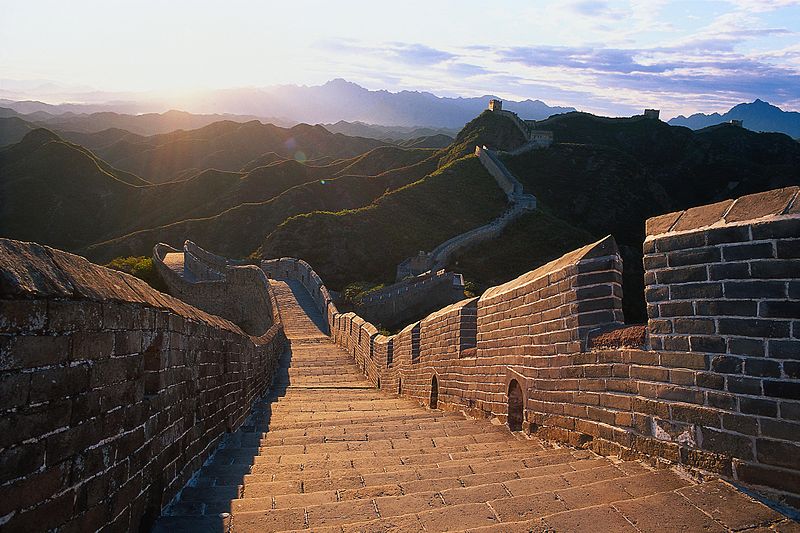 Great Wall The Great Wall also played a big role in border controls, allowing the imposition of duties on goods transported along the ancient Silk Road, regulation and encouragement of trade as well as the control of immigration and emigration. It also served as a sort of corridor for transportation. To fortify the wall further many watch towers, troop barracks, garrison stations, signalling stations (through the means of smoke or fire) were constructed. The main Great Wall line stretches from Shanhaiguan in the east, to Lop Lake in the west, along an arc that roughly delineates the southern edge of Inner Mongolia. It measures 8,850 km totally, including the actual wall, trenches and natural barriers like hills and rivers. It was a stiff climb and even though the people in our party went up to the first tower, I must admit I was a bit lazy since the steps were pretty high and I really didn’t want to strain myself too much. I had a great view of the surrounding hills even before reaching the tower. In fact there was a little road which diverted from the main wall which had a lot of interesting features and gave a great view of the surrounding hills. The trees were slowly changing color and that is something which is most fascinating to me. Even though no one can help being impressed by the sheer size of this colossal construction I felt uncomfortable and could feel the tears and blood and sweat that had gone into the making of this mammoth structure. I felt the stones were crying out to me and felt they could have told me many bitter stories of the lives that had been lost here. Later I was told that countless people had indeed died during the construction not only due to the work but also from starvation since very little food could be brought for them from the villages which were quite far away. So I realised that my instinct was right and the stones were indeed weeping tears of blood. The pall of misery which covered that place was made as much by the general pollution and haze which covered the whole city of Beijing as well as the sorrow of those who had died while making it. That night our friends took us to the night market for weird types of food which lined a whole street. It was a nauseating experience for a vegetarian since the stalls sold almost every type of creepy crawlies as well as insects that we can ever imagine. This included snakes, black scorpions, cockroaches, beetles and larvae of various types. These were all roasted and screwed on sticks in order to facilitate eating. One didn’t need any plates. You just had to take a stick and crunch while walking down the street. Everything including fruit was sold on sticks and our friends really enjoyed themselves trying all the various delicacies. We were terrified of trying even the so called vegetarian dishes. I thankfully drank a tender coconut which had somehow found its way into this bizarre bazar of insects. When I commented on the fact that there were no stray dogs or cats or birds in the city I was told very simply that they had all been eaten up. That was the only time I wished that we could import some Chinese into our country to get rid of stray dogs and cats!! Another delicacy here was the hairy crabs. We went to the restaurant at night where our friends ordered the hairy crabs. They could choose the ones they wanted by pointing at the creatures which were lying around with their legs tied up since if they were let loose they would crawl around the place. After the choice was over, the crabs would be steamed and brought to the table. Eating them was a laborious process and we watched in fascinated horror as our friends gorged on them. They were given special gloves since they had to be eaten by hand. They ordered another twenty five crabs all alive with legs tied up to be taken to S’pore for their friends who were eagerly awaiting their return with the promised delicacy! The next morning we were off to the Forbidden City. Before entering we had to pass the famous Teneman square which was a huge square dominated by the gigantic photo of Mao Tze Tung. This was the place where he used to give rousing talks to the populace and where he declared freedom for the country from the thraldom of the Emperors. It was quite an impressive place but unfortunately I couldn’t get round to see his body which had been embalmed and kept in a glass house at the back of the square. There was too big a queue. For sheer size and immensity there was nothing to beat the Forbidden City. In olden days it was said that those who entered the huge portals were never seen again. Of course tradesmen and officials could go in and out but the servants and concubines who went in were never to be seen again. We passed through courtyard after courtyard each meant for a special purpose. In the first one the Emperor would conduct certain rites to the gods, in the next he would meet army chiefs and hold parades and in the various throne rooms he would meet different types of dignitaries. Separate rooms were there for all his three hundred concubines. Even if he spent one night in each of their rooms he would take almost a year to finish the round. I wondered how much time he had to spend with the Empress. We walked about three hours before reaching the other end of the city and even then it was not quite over. There was a path leading to a small palace on top of a hillock from which one could have a magnificent view of all the buildings. However I was too tired to clamber up to the top. 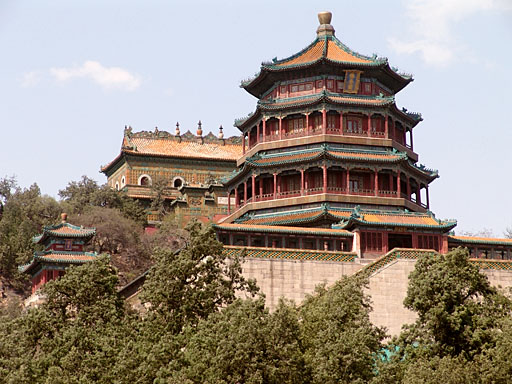 Summer Palace During the hot Beijing summers, the Imperial Family preferred the beautiful gardens and airy pavilions of the Summer Palace to the walled-in Forbidden City. The infamous Dowager Empress Cixi took up permanent residence there for a time. The tales of her extravagances and excesses sounded like Marie Antoinette who bought a diamond necklace when the country was starving. The Empress made various innovations using the money which was supposed to have been spent on the navy. She had long, black hair even at the age of eighty and used to kill the person who allowed even one precious strand to drop. I asked how she managed to climb up and down these stairs from the shopping complex right up to her boudoir. I was told that she never climbed but was carried in a palanquin with four bearers since she was very portly. Needless to say the Emperor was totally under her thumb and didn’t dare to thwart her in any way. But I must say I admired her handiwork. The palace had a peaceful aura unlike the Forbidden City. This was probably due to the fact that she had become a Buddhist in her old age. Part II The next afternoon we said good bye to our friends and took the flight to Chengdu, famous for its Giant Panda base. We reached at night and had quite a challenging experience locating our hotel. We spent the night there and left for our most exciting adventure. This was to the Jiuzhaigou Valley National Park, high up in the Min Shan mountain range in Sichuan. 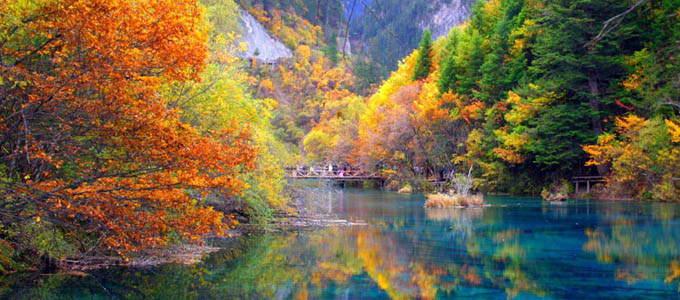 Jiuzhaigou We were really hungry when we reached the hotel which had been picked due to its proximity to the National Park. In fact it was within walking distance of the park. Of course no one in the hotel knew a word of English so I trotted out my recording and asked him where we could find some food like this. He nodded in delight and took us to a Muslim restaurant. Almost everything on the menu had beef or fish. Later we realised why he had taken us to this particular restaurant. As I mentioned before even the so called vegetarian dishes were sautéed with pork fat. Since Muslims don’t eat pork we could be assured that this restaurant would use vegetable oil and not lard. The only vegetable they grew around here was a type of leaf and this was just steamed and brought. I managed to identify another vegetarian dish which I thought was capsicum but it was some sort of large chilli. It was fairly spicy but a refreshing change from biscuits and green leaves. Rice of course was always available in plenty and was very cheap. It was served in a sort of wooden barrel. Since neither of us were great rice eaters we were forced to waste most of it. That evening Mohan went and bought entrance tickets for the park next morning. It was really cold in the night but luckily the room had a heater which showed 30 degrees but I doubt if it was more than 22 degrees Celsius. The park opened at 7 am and by the time we reached, there was already a huge crowd of Chinese tourists waiting in a queue for the tickets and after that for the bus. There were various buses and no one spoke a word of English so we didn’t know which bus to take. Most of the tourists had come in groups and were being hustled by their tour guides. Somehow we managed to get into a bus and off we went. The word Jiuzhaigou means the Nine Village Valley in Chinese. The nine villages were Tibetan and six of them are still inhabited by Tibetans. It is one of the World Heritage sites and is China’s premier national park. The elevation ranges from 6,529 feet from the village where we were staying to 15,630 feet at the highest point of the park. It is on the border of Tibet. The Chinese I realized were as talkative and noisy as Indians and we set off on a cold morning with a bus full of chattering people all exclaiming in awe whenever we passed a particularly stunning bit of scenery. The bus stopped at certain scenic spots and we could get down and wander about as much as we wanted and then catch the next bus to wherever we wanted to go. This was a great way to see everything since we could take our own time but actually it didn’t work out quite as smoothly since we were pressed for time and lack of knowledge of the lingo so we didn’t know which bus to take to the next port of call. Despite these limitations I think we managed pretty well. This was a magical place filled with aquamarine pools and laughing, cascading waterfalls, snow peaks and Tibetan villages. This was one of the few places in China where we saw birds. Apparently over two hundred species of birds lived here. Many lovely flowers grew in nooks and crannies. The first stop was at a Tibetan village where we saw a lovely couple dressed in Tibetan costume. They wanted to take a photo with me and I was of course delighted to oblige. Then we followed the crowd down to an ancient water mill and the stream which was crystal clear. In fact the meanings of these words were clear to me only after seeing this stream. We followed the track up the forest along the most spectacular scenery to the Rhinocerous pool which was so blue that no words could describe it. Since autumn was almost upon us the opposite bank was lined with orange-leaved trees which were all perfectly mirrored in the lake so that from this side the lake looked as if it had only a small portion of water since the other side looked as if it was all land. All the lakes here were so clear that we could see right to the bottom where there were strange rock formations and stones. We crossed the beautiful bridge and went back to the main road where we caught a bus again and this time it took us right up above the snow line. Everyone jumped out and people started playing around in the snow like children. I was enchanted to see the snow peaks towering above another huge lake. It looked like the Kedar peaks and I felt the presence of the Lord of the mountains. The spectacular jagged alpine mountains soared above the coniferous forest around a fairyland landscape of crystal clear, strange-colored blue, green and purplish pools, lakes and waterfalls. The pine trees were covered with a coating of snowflakes which added to the magic of the view. 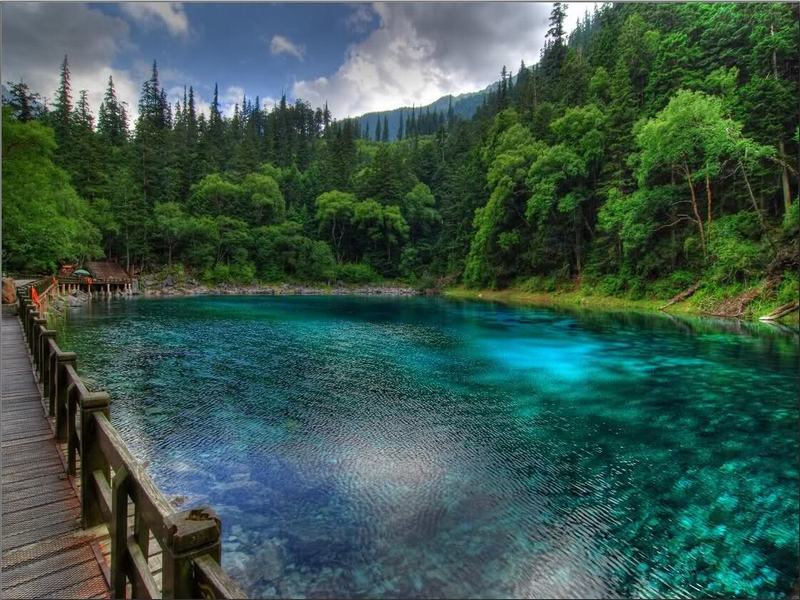 Rhinoceros pool Buses were plying continuously but we chose to walk down a trail through the Cyprus forest which had the tantalizing sign-board, “strange coloured pool.” When at last we came upon the pool it was indeed a magic pool. Never have I seen such a colour. The water was perfectly still as if waiting for some dramatic event. Had it been in India I was sure that there would be a story attached to it that it was Parvati’s private bathing pool. The water was a strange bluish, greenish purple. Not a ripple stirred its translucent beauty. The banks were lined with chattering Chinese hanging over the railings so I didn’t want to go there. We went up to a small track above the pool from where we could get a fabulous view. From there we followed the track which led us through lovely forests and glades to where the buses were parked. I was hoping to have a glimpse of a giant panda in the wild since this was their habitat but of course we had no such luck. Apparently they are very shy creatures and the numbers of tourists rushing around would be enough to put off any self-respecting panda. We got back into one of the buses and were taken to another Tibetan village. These were the only people who were allowed to stay inside the park after 5 pm. The village had the usual shops and restaurants. They was a brisk trade in the seeds of a particular tree which could be washed and worn round the neck as talismans. The Tibetans are a very superstitious people so there were a number of talismans of this type which was being sold. They made some beautiful embroidered shawls as well. The next problem was to find a bus which was returning back to the village where we stayed. There was no one who could give us an answer to this one so we got on and off some buses and were whisked along this enchanted mountain of waterfalls and cascades and colored lakes and pools. I really felt like Alice in Wonderland and wouldn’t have been surprised to see apsaras dressed in lilac floating over the lakes! We tried to make it back to the village before the hordes were disgorged at 5 pm. Luckily we managed this and wandered through the comparatively empty stalls which were waiting for the tourists who would soon be swarming all over the place. Of course the only place we could go for a meal (lunch and dinner) was the Muslim restaurant where we were welcomed with great joy by the waitresses all dressed up with their heads tied up in the typical Muslim bands which seemed rather strange on the Chinese features. 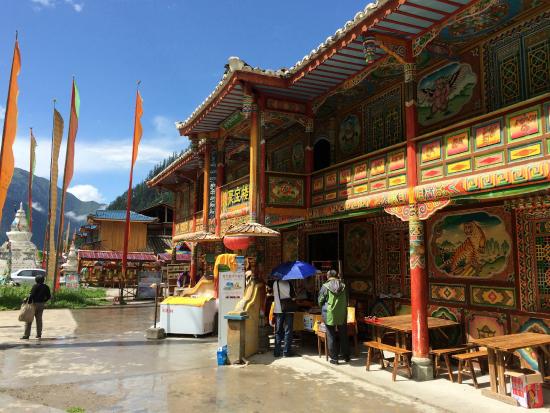 Tibetan village The next day we took the taxi back to the cold airport. The weather was really bad and we were a bit scared that the plane might not make it. It had to come from Chengdu and go back immediately. However it did come and we reached Chengdu by lunch time. I thought Chengdu would be a sleepy little town with a few pandas strolling around but it was a huge airport and a huge town and we were put up on the 27th floor of our hotel! We were famished by the time we reached. I trotted out my recording and asked the manager who knew a smattering of English if he could recommend a restaurant for freaks like us. He nodded as if he understood perfectly well and whisked us off through various routes. He would look round now and again with a sympathetic look. Again I felt like Alice struggling to keep up with the red queen. On one of his backward glances he pointed to the street we were walking on and said, “Walking Street – very famous.” I scarcely had time to see anything since all my efforts were concentrated on trying to keep his head in my line of vision. At last he took us to a mall where there actually was an organic Chinese vegetarian restaurant and an Indian restaurant adjoining it. Our guide thrust the hotel card into our hands and gave a slight nod and a wave and left us to our fate with a few hints on how to get back! For once we could eat a good Chinese meal without worrying about what was in it. There was a very friendly lady who was serving and conversing. Of course we had no idea what she was talking about but nodded wisely and well. We had some delicious noodles and some vegetables. Needless to say we haunted that place for all the three days that we were there. The people in the Indian restaurant caught us as we went back and we met the cook who was from Garwal of all places. He was delighted to know we also came from Garwal. I was not anxious to have Punjabi food after all the days of near starvation so we never had a meal there even though he promised to make us good vegetarian meals. Luckily Mohan had memorized the route to the hotel so we managed to find our way back to the hotel. Next thing was to find out how to get to the Panda reserve. The manger told us it would be better to take a taxi there and not go on a tour so the next morning we set off. The breeding research base was only 10 km from our hotel so there was no problem in getting there. As usual there were milling crowds around the ticket booth since there were so many tours with their shouting guides all holding fluttering flags in their hands. The area reserved for the preservation of these species is really huge apparently 300 sq. Meters. Great care has been taken to get all the types of flora to which these gentle giants are used to. Of course their main food is a type of bamboo which only grows in this Szechuan region. They have to get lorry loads of the stuff from all the outlying regions since these creatures eat huge quantities of the stuff. We saw them crunching and munching on the thick branches and more tender shoots with evident relish. My first view of one of them was such a delight since he looked exactly like a stuffed toy. It was sitting absolutely still on the branch of a tree totally oblivious of the great crowds hanging over the fence. At last he climbed down laboriously and shuffled off to a sort of structure on which had been placed some delicate bamboo fronds. Again he clambered up laboriously, hauling himself up by various means and then sat crunching the juicy shoots with his back turned towards the interested audience. It was written at various places that pandas were shy creatures and shunned noise, advising people not to make any noise but as I said the Chinese were very much like Indians and people were whistling and making shrill noises to attract the fellow but the more they whistled the more he turned his back. Since he had a very cute back it was not so bad. Apparently these creatures are close cousins of real bears and are really carnivores since they have canines meant for carnivores but something happened somewhere and they became vegetarians though I hear that occasionally they would catch a rat of some such rodent.  pandas We went to the nursery to see the babies and this was the cutest place of all. They really looked so huggable and artificial lying like black and white balls in their incubators. I was just longing to take one up in my arms but of course we were being closely watched so there was no chance of any such intimacy. Since these creatures are fast disappearing, the reserve was started in an attempt to help preserve the breed. The female pandas normally have two babies a year but since they can’t look after both, they leave the weak one to die and feed only one. It is a miracle if even one panda baby survives. A baby panda weighs only 150 gms and looks like a mouse and the mother weighs 5 to 600 kilos! I don’t know the baby could clamber up this enormous body and suck milk. The reserve rescues the babies and keeps them in incubators and feeds them artificially. They even do artificial insemination which apparently is a difficult thing since they have to carefully watch when the female comes on heat and then inseminate her. The pandas are shy creatures. They normally carve out territories for themselves and hardly ever go beyond that unless they smell a female in heat. The whole affair is rather complicated and that’s one of the reasons that they have a dwindling population. Anyway a lot is being done to keep up their numbers and the population is slowly increasing. It was great fun to go from one enclosure to another trying to spot them sometimes on trees and sometimes inside their lairs. There was one red panda which was very beautiful but didn’t look in the least like a panda. It had a furry tail and totally different features from the giant panda. The next day we started off early to go to the ancient town of Luodai which is supposed to be the most well-preserved Hakka town. Being close to the big metropolis of Chengdu the town has become quite touristic but again we were lucky as there were hardly any tourists when we went. Apparently the time to visit this place is during the water dragon festival on the 26th and 27th of July every year. The Hakkas are a tribe of ancient China who have done their best to preserve their own culture and traditions. They are great immigrants and used to travel from place to place carrying their cultural traditions with them. The town has a museum which gives a good idea of their wander lust and how they migrated from the north in search of peace and of course prosperity. The old street is unique and is flanked by all sorts of exciting shops which sell their own special handicrafts and eats. They make beautiful ebony combs which are supposedly unique. These combs are exquisite but quite expensive. Apart from the great variety of non-vegetarian foods which are always on sale, they have a unique vegetarian sweet which looks like a walnut and is filled with honey and chopped walnuts. It is made in a quaint fashion using a homemade machine with moulds to give the walnut shape. I was quite fascinated by it and filled my stomach with the walnut bites since there was nothing else to eat except corn on the cob which was a bit tough on my teeth. The Hakkas were apparently a migratory section of Chinese who due to invasions in the north decided to keep their cultural style and migrate south. They were despised by the others since they did not conform to all their traditions. They gave equal status to women and practiced monogamy. They did not follow the custom of binding women’s feet since they needed robust feet in their migratory marches. They were also keen on education and many went overseas to fend for themselves. It is said that the Hakkas were responsible for the Chinese revolutions since they disdained to be the slaves of the emperors and were ready to die fighting for their liberty. They had their own cuisine and style of architecture. The four guild halls in Luodai were good examples of Hakka architecture. We spent a whole day in the village. There was one main street and many small lanes tapering out of it. These lanes were not meant for tourists and had shops meant only for locals. I was horrified to see two handsome turtles kept in a big tank which was still too small to accommodate them. Anyway I was sure they would not live to see another day so I suppose it was all part of the game. Another interesting feature was the small carts drawn by old men wearing straw hats. The carts looked quite fancy and were decorated with paper flowers .At times a small child would be sitting inside looking almost like a doll. There was also an artist at one stall who was determined to sell me a painting. I was drawn to a black and white painting of a horse which I would have bought had he offered a more reasonable price. Many women were selling local fruits in bamboo baskets. The older ones refused to have their photos taken but the younger ones were quite happy about it. It was a great experience though rather tiring. Considering the fact that we knew no Chinese at all I think we did quite well for ourselves. As it turned out it appeared as if we had reserved our best tour for our last day. It was to the Leshan Giant Buddha. After the Taliban destroyed the great Buddha in Afghanistan, this is the largest in the world. It is about 233 feet high and the huge fingers measure 27 feet. The 30 feet instep is big enough for a hundred people to sit on and the 79 feet shoulder is large enough for a basketball ground! It was too far from Chengdu to take a taxi so we decided to go by local bus. This was a feat in itself since we knew no Chinese. We got our friend at the hotel to write all the names of the places we had to visit and then took a taxi to the bus stand and somehow managed to show the piece of paper in which everything was written in Chinese at the ticket booth and got into the right bus and got off at the main bus station in Leishan. The next challenge was to get a local bus to take us to the ferry to view the statue. Actually we had found out on the web that there were two methods of seeing the Buddha. One was the traditional way in which you have to take a ticket to the park and walk for miles until you reached the top of the statue and then climb down some precarious steps till the bottom and then crick your neck trying to see his face and then make the same climb back to the top. The other way was to take a ferry which would take you right bang in front of the Buddha so that you really had a marvelous view. The ferry was supposed to stay for about half an hour in front of the Buddha allowing you to take photos and enjoy the scene so we took this option. 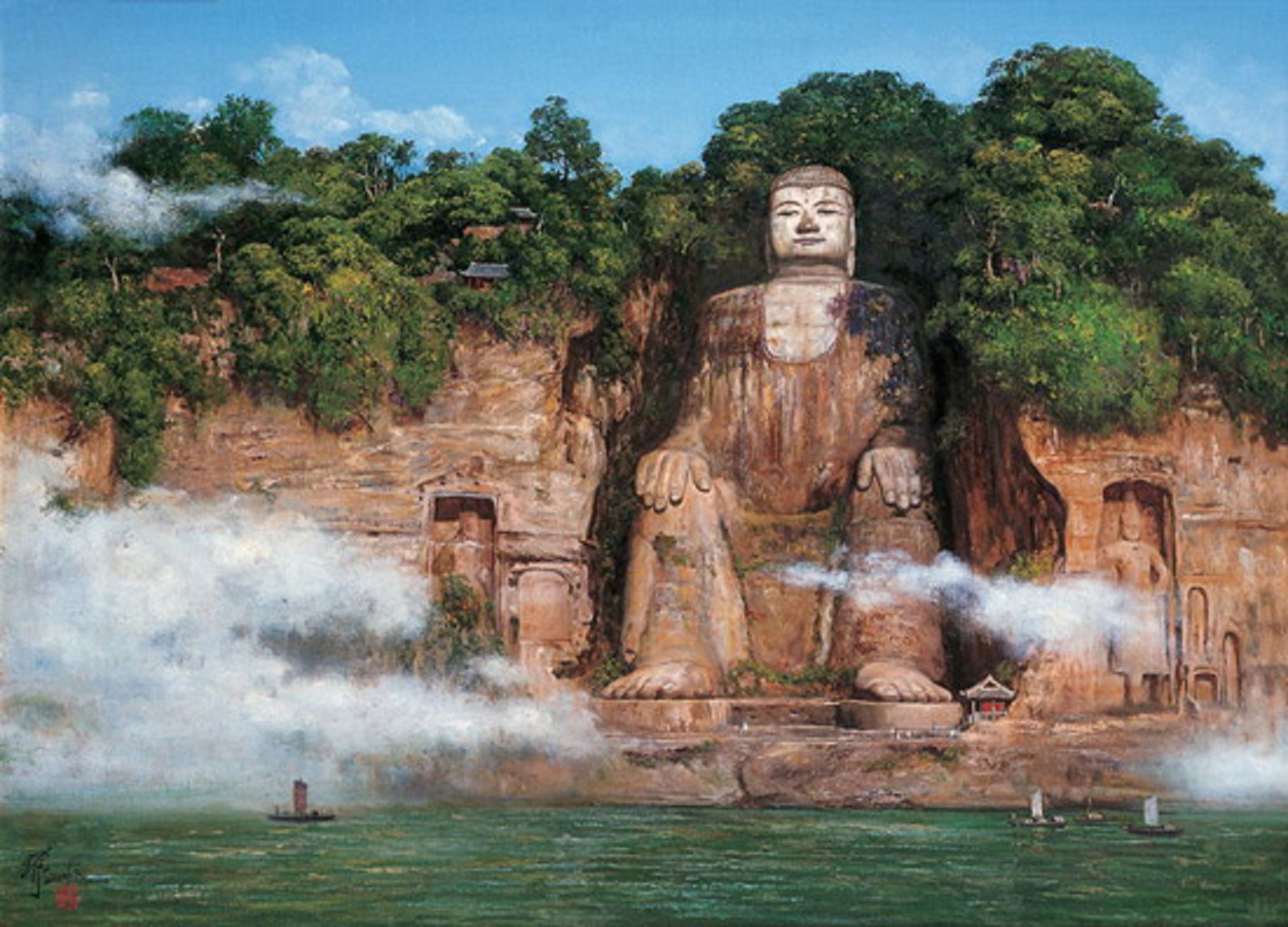 Leishan Buddha The Buddha was situated at the confluence of three rivers, Min, Qingyi and Dadu. The story goes that the confluence of these three rivers was a very dangerous spot due to the whirling waters and many boat accidents had taken place there. Countless people had lost their lives while fishing in these waters and they decided that the disasters were all due to the presence of a water spirit. A monk called Hai Tong was filled with pity for the poor people who were killed on that spot. He initiated a project to carve a statue of the Buddha at the confluence and proclaimed that the Buddha would ensure the safety of the people. Since he had no money he decided to go begging. After twenty years of begging for alms he started the project in the year 713 at the time of the Tang Dynasty. It is said that some government officials had their eye on the money which poor Hai Tong had raised and threatened him but Hai Tong refused to give the money and said that they could have his eyeball instead. He is supposed to have dug out one eyeball and thrown it at them. Seeing this, the officials fled in terror and the work commenced in earnest. This shows that government officials then and now and in whatever country are greedy fellows and never change!! It was finished 90 years later in 803. Of course the monk Hai Tong who started this project passed away when it was but half done but two of his disciples continued the work and as mentioned before the work was completed after 90 years. Thousands of workers spent whole lifetimes carving the statue. It represents Maitreya, the Buddha who is still to come, in a sitting posture with a smile on his face. His naked breast and paunch are exposed and he sits facing the turbulent confluence of the three rivers. Needless to say the turbulence of the waters subsided after the Buddha was completed and fishermen could ply the waters with ease. The charm of the Buddha lies not only in its size but also its technical details. There are 1,021 buns or curls representing coiled hair on his head. These have been skilfully embedded on the head. These buns look like curls and seem to be an integral part of the head. However they are part of a wonderful secret drainage system. Rain water is kept off the face by these buns and taken to the hidden channels on the arms, behind the ears and in between the clothes. This helps to keep the inner part of the idol dry and protects the statue from wear and tear caused by rain water. The large ears which are 23 feet long are made of wood and smeared with mud. How great was the skill of the craftsmen who fixed these wooden ears on a stone head so that they remained intact for thousands of years. Our ferry stopped right in front of the statue. It is impossible to describe the size of this awe inspiring marvel. The main statue was carved out of the mountain and must have been about fifty feet away from the river. But there were other carvings on either side of the rocks which rose right above the river. These were also very beautiful and were of bodhisattvas and perhaps apsaras. There was a platform in front of the main statue and steep steps on either side. Pilgrims could climb down one side and observe the idol from the platform in front and then climb up the other side. This meant that they really had a very poor view of this wonderful statue since they were right at his feet and would have had to crane their necks to look up at him and even then the view must be rather poor. Of course they never got to see the lovely carved figures on either side which were on the river and nowhere near the platform. I was really glad we had opted to come by ferry for they waited long enough for everyone to take a million photos and we really had a grandstand view of all the carvings and of course the main statue. The river was still frothing and foaming since we were anchored right at the confluence. Of course we Indians believe that the confluence of rivers is always a mystic thing and filled with vibrations. I could feel the energy which was pulsing along the corridor of time. I prayed to the Buddha to bring peace to the world and help the Chinese to believe once again in a higher power. At the moment it appeared that the only thing they worshipped was Mammon. I was truly grateful that Mao Tze Tung in his frenzy to destroy all ancient relics did not damage this unbelievable piece of art. This was the end of our incredible journey to interior China. We returned to Chengdu the way we came and were glad to go once again to the vegetarian Chinese restaurant since we had hardly eaten anything except biscuits the whole day. The next day we left for Shanghai and from there to Delhi. It was indeed an unbelievable journey, never to be forgotten. All credit goes to Vanamali who alone had arranged everything for us. Jai Jai Jai to Vanamali! Hari Aum Tat Sat |
